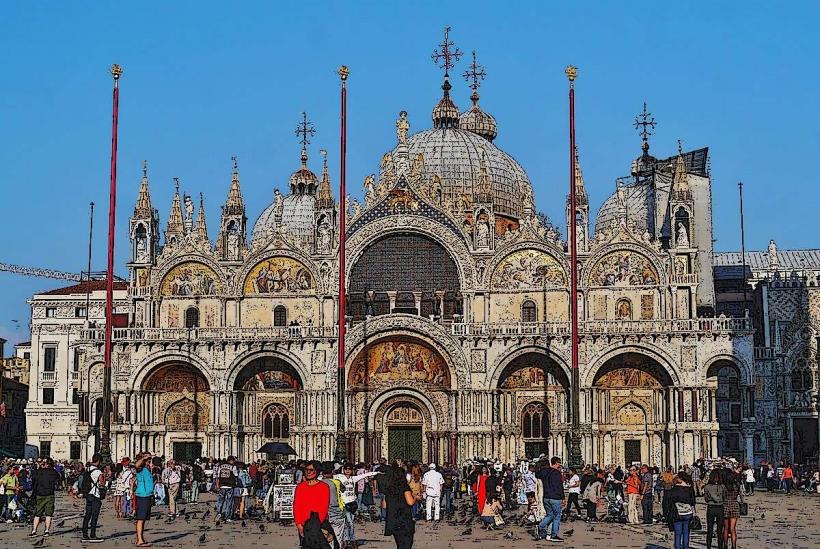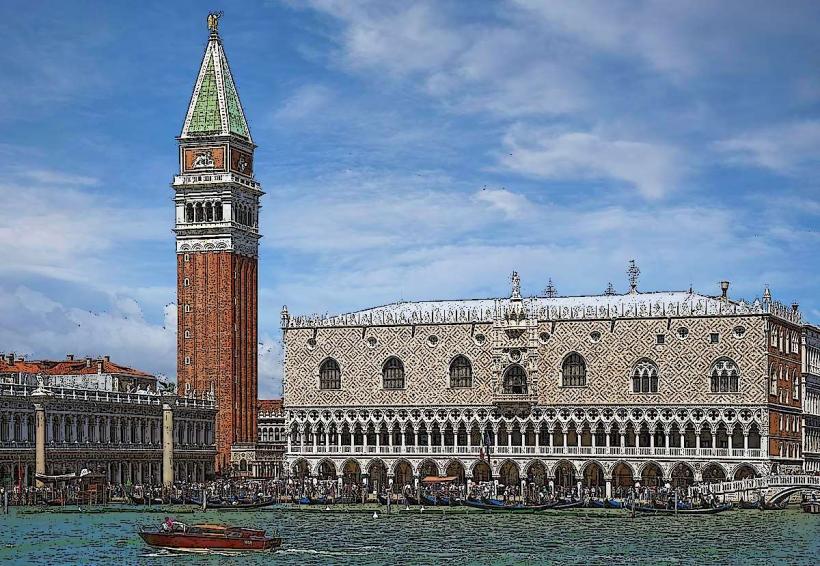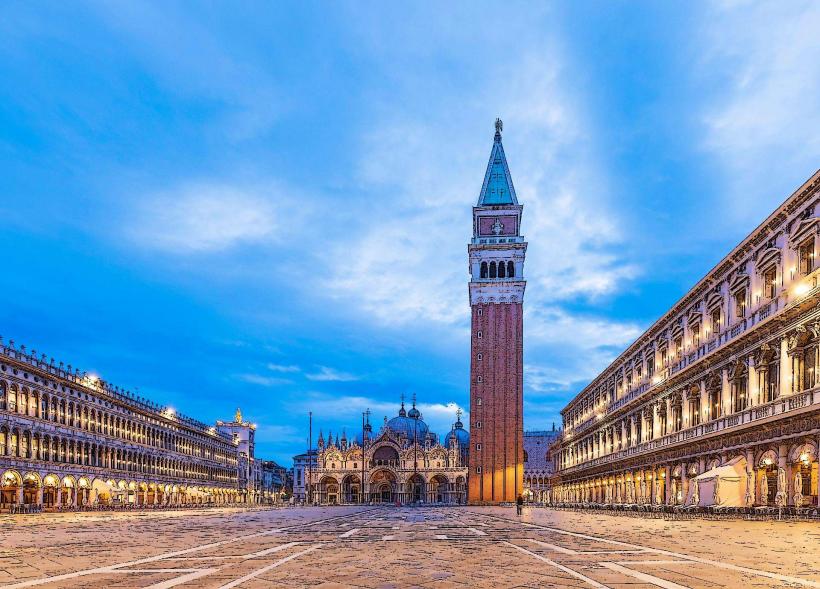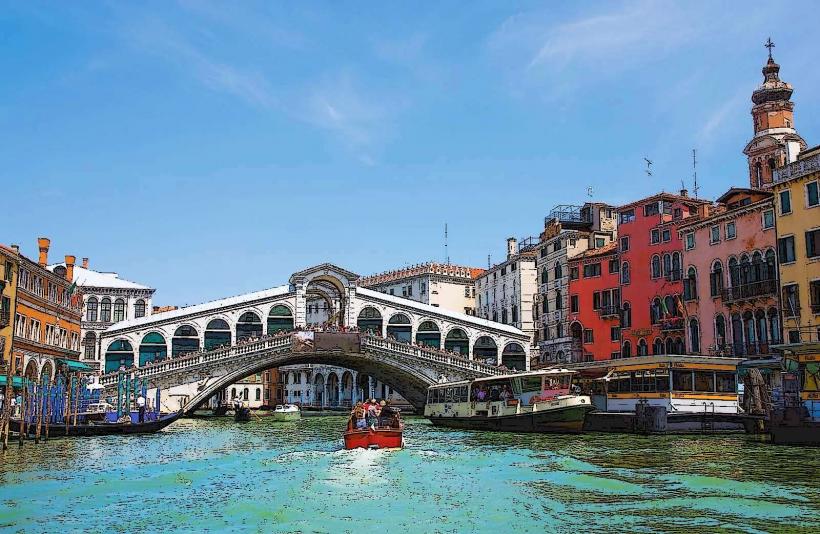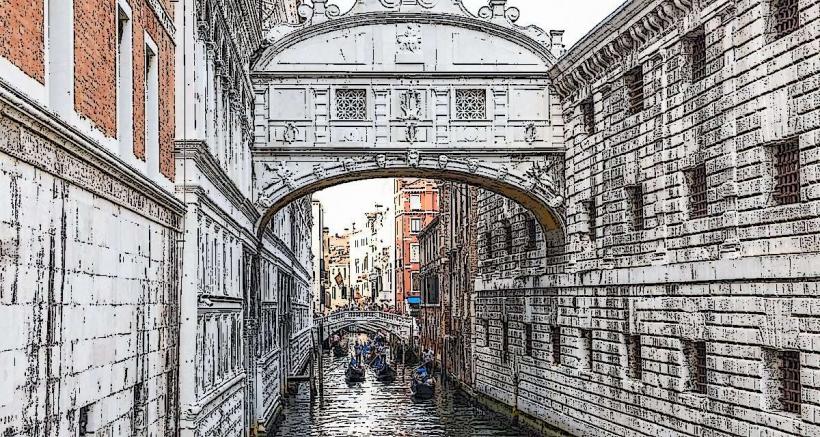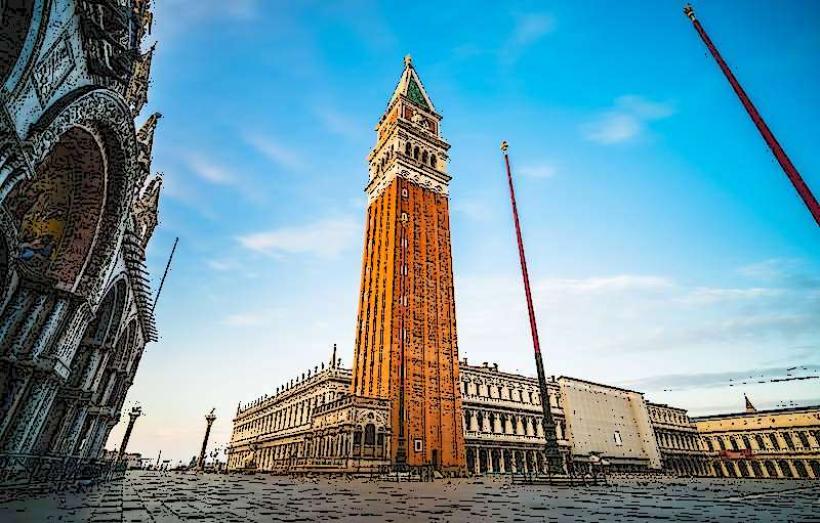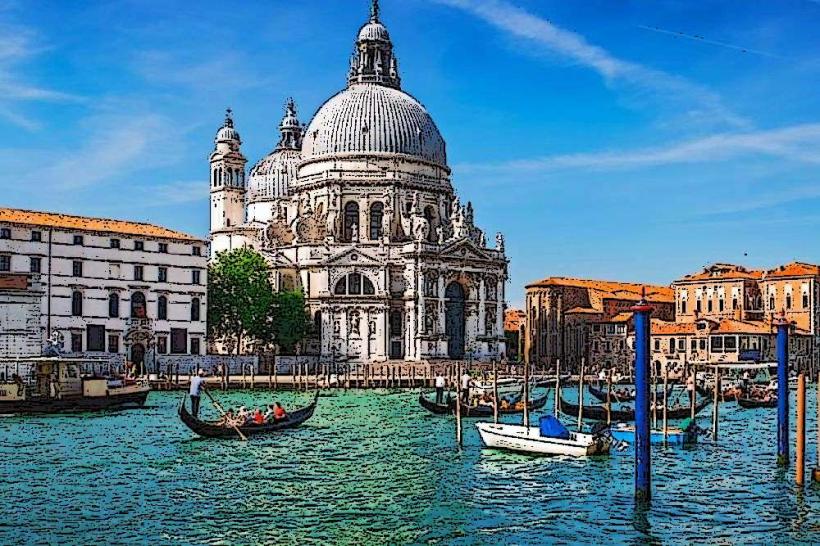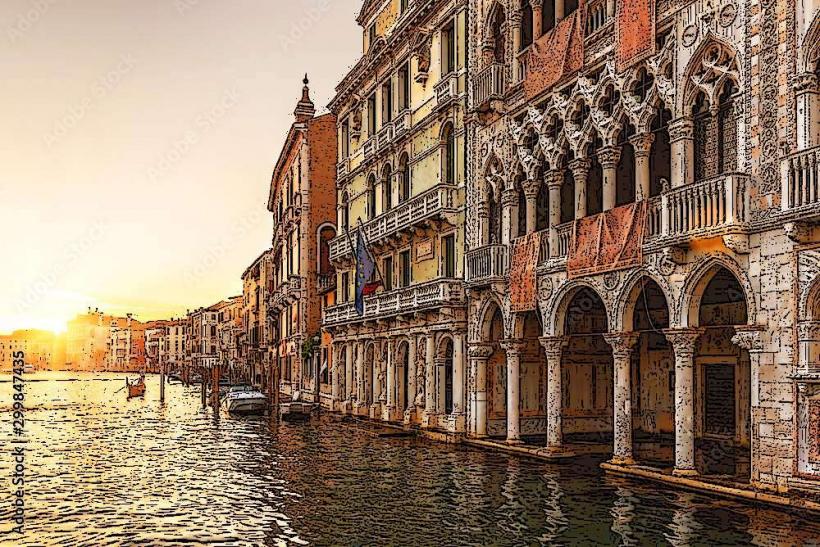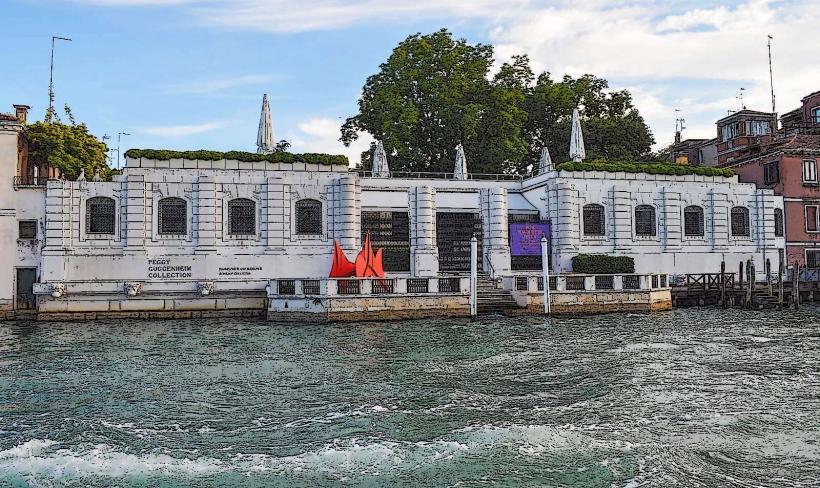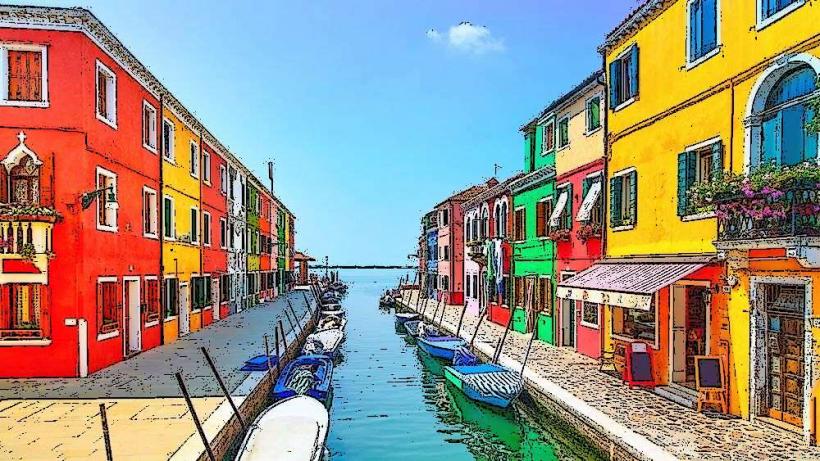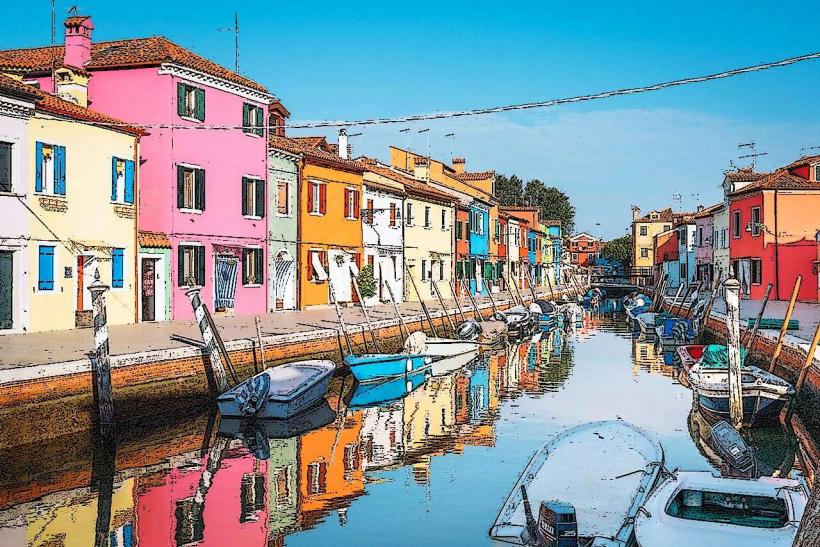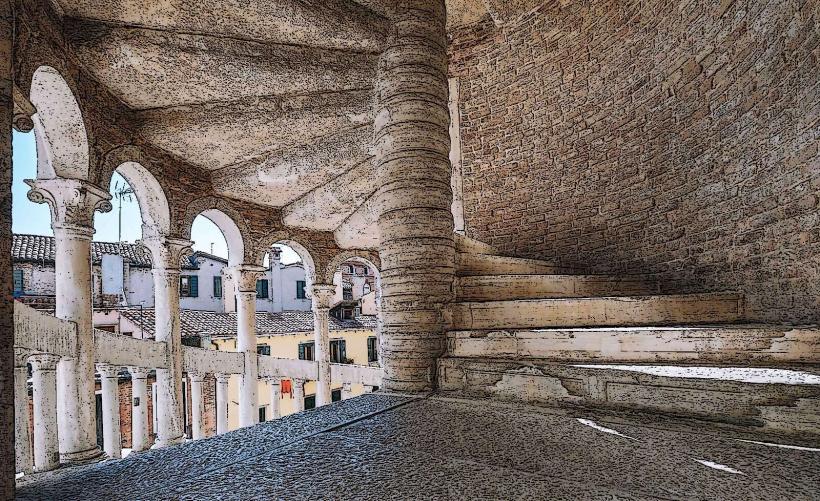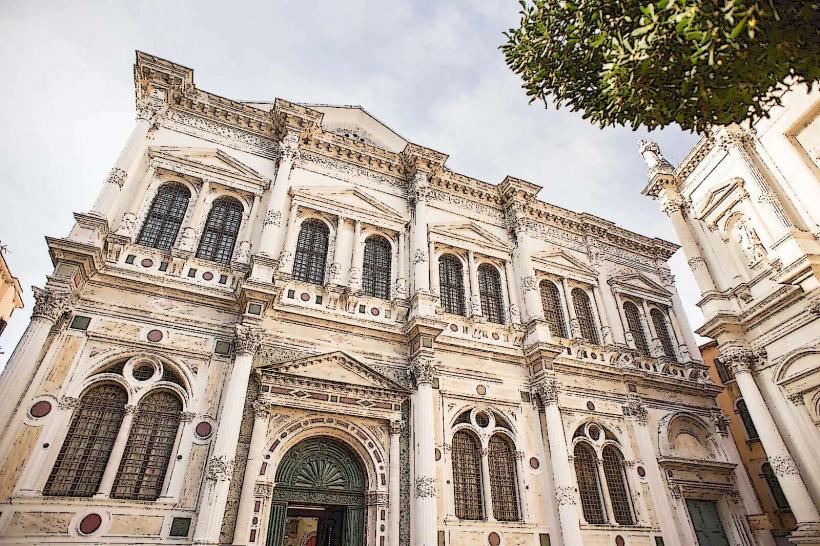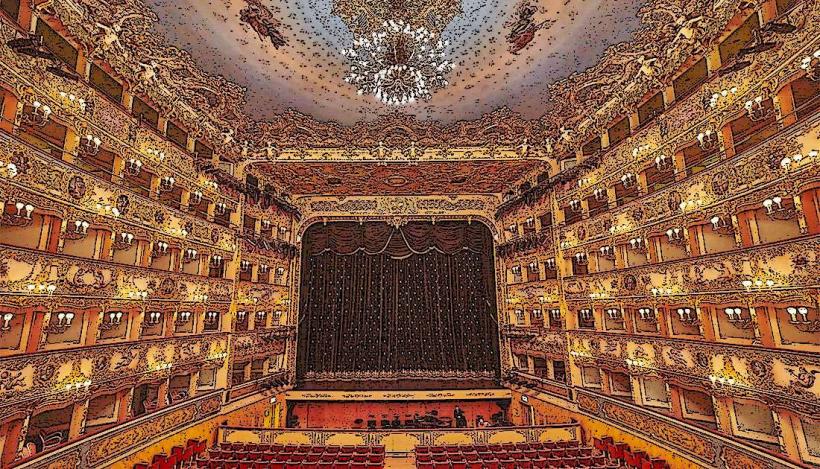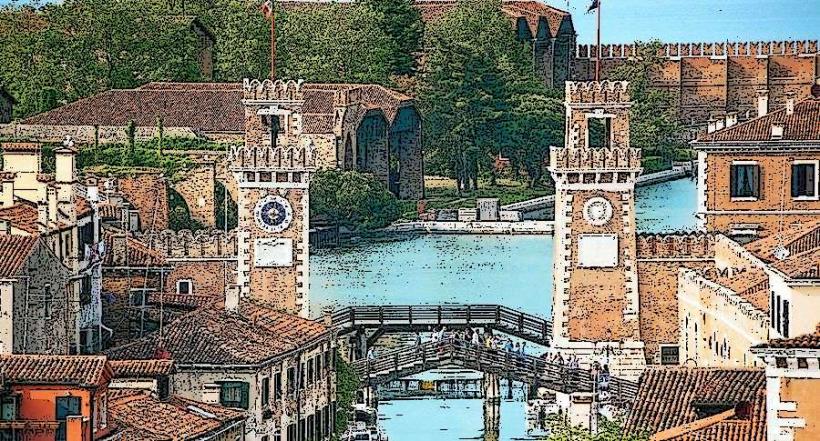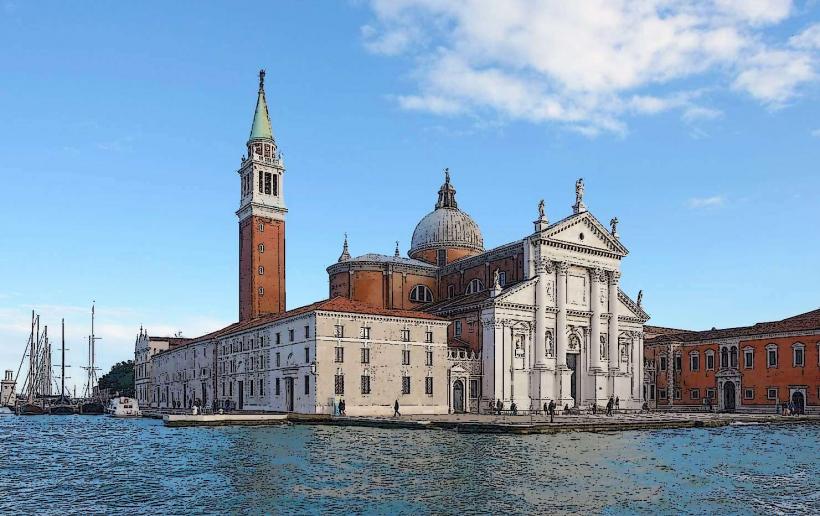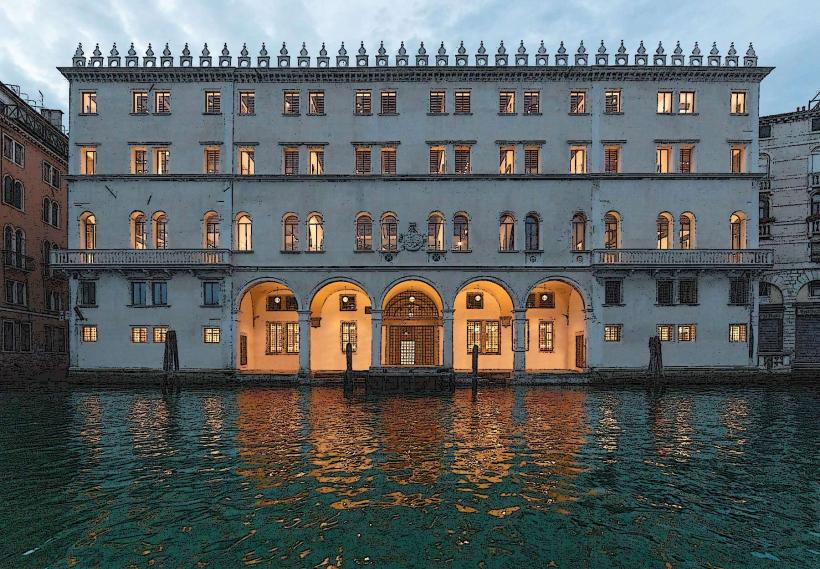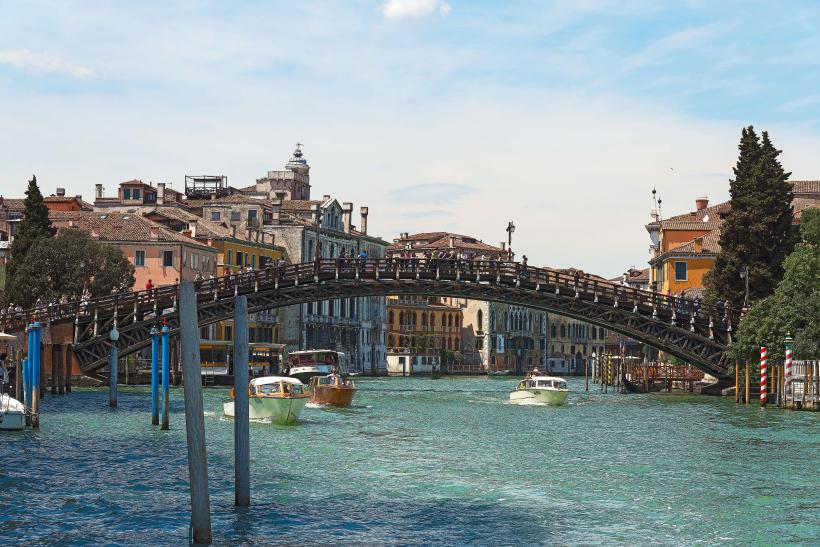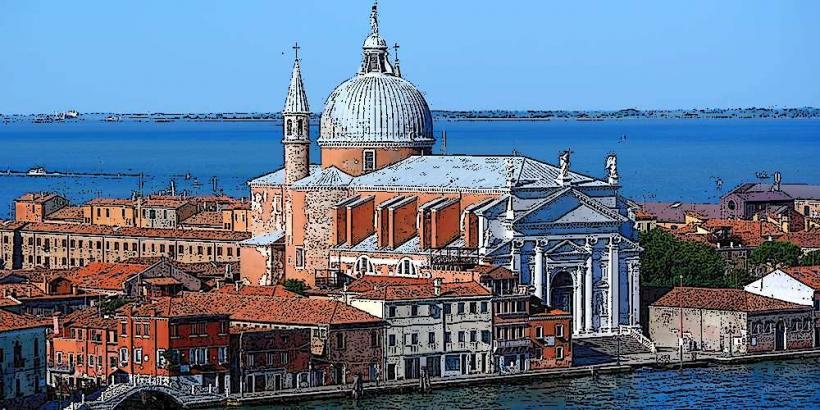Information
Landmark: Canal GrandeCity: Venice
Country: Italy
Continent: Europe
The Grand Canal (Canal Grande) is the main waterway that flows through the heart of Venice, winding its way through the city in a gentle, S-shaped curve. It is by far the most iconic and recognizable canal in the city, serving as the primary route for transportation, commerce, and tourism. Stretching approximately 3.8 kilometers (2.4 miles), the Grand Canal is lined with historic buildings, beautiful palaces, and other landmarks, making it one of the most photographed and admired waterways in the world.
1. History and Significance
- Ancient Origins: The Grand Canal has existed since the early days of Venice, and it is believed to have originally been a natural lagoon channel. Over time, it became an important waterway, used for transportation, trade, and commerce. The canal has played a central role in the development of the city, which was founded in the 5th century and grew into a powerful maritime republic.
- Commercial Importance: During the height of the Venetian Republic (circa 12th to 15th centuries), the Grand Canal was a major commercial route. Merchants used it to bring goods from all over the world into Venice, with the city serving as a key hub for trade between Europe, the Middle East, and Asia. The canal was essential for the flow of goods such as spices, silks, precious metals, and artifacts.
2. Geography and Structure
- Shape and Path: The Grand Canal runs in a reverse S-shape, beginning at the Ponte della Libertà (the bridge that connects Venice to the mainland) and meandering through the heart of the city before emptying into the Basin of St. Mark. The canal divides the city into two main districts: San Marco (to the south) and San Polo and Santa Croce (to the north).
- Width and Depth: The canal varies in width, generally between 30 and 70 meters (98 to 230 feet), and can reach depths of 5 meters (16 feet). It is wide enough to accommodate large vaporetto (water buses), gondolas, water taxis, and cargo boats, making it the main thoroughfare for travel within the city.
3. Architectural Landmarks
The Grand Canal is flanked by many of Venice’s most remarkable buildings and palaces, showcasing the city’s rich history, wealth, and architectural styles. Some of the most famous buildings include:
- Palazzo Ducale (Doge’s Palace): Located at the southern end of the Grand Canal, near Piazza San Marco, this stunning Gothic-style palace was the residence of the Doge (the ruler of Venice) and the seat of the Venetian government.
- Ca' d'Oro (House of Gold): A magnificent Gothic-style palace, known for its ornate facade, which once featured golden accents. It is one of the most celebrated buildings on the Grand Canal, now housing an art museum.
- Ca' Rezzonico: A Baroque palace located along the Grand Canal, it is now home to the Museum of 18th Century Venice. The building is renowned for its opulent interiors and fine art collections.
- Palazzo Grassi: A 18th-century palace, which is now used for contemporary art exhibitions and is part of the city's cultural scene.
- Fondaco dei Tedeschi: A historic building that once served as a warehouse for German merchants, it has been converted into a luxury shopping center with panoramic views of the Grand Canal.
4. Transportation on the Grand Canal
- Vaporetti: The vaporetto, or water bus, is the most common form of public transportation on the Grand Canal. These boats run regularly, offering a convenient and scenic way to get around the city. The Grand Canal is served by multiple vaporetto stops along its length, allowing passengers to disembark at key landmarks, bridges, and neighborhoods.
- Gondolas and Water Taxis: Gondolas are perhaps the most iconic and romantic way to travel along the Grand Canal, though they are often used more for tourist rides rather than practical transportation. Water taxis are also available for private transport.
- Boats and Barges: The canal still serves as an active waterway for goods transport, though this is now more limited compared to the commercial traffic of the past. Barges deliver supplies to the city and its businesses, while some of the larger vessels are used for tourist excursions.
5. Bridges Across the Grand Canal
There are several bridges that cross the Grand Canal, allowing pedestrians to move from one side of the canal to the other. Some of the most famous bridges include:
- Ponte di Rialto: Perhaps the most famous bridge over the Grand Canal, the Rialto Bridge is a historic stone structure that connects the San Marco and San Polo districts. The bridge is known for its shops and the view it offers of the canal.
- Ponte dell'Accademia: Located near the Accademia Gallery, this wooden bridge offers a fantastic view of the canal and connects the San Marco district to Dorsoduro.
- Ponte degli Scalzi: Located near the Santa Lucia train station, this bridge is an important access point for visitors arriving by train.
- Ponte della Costituzione: The most recent addition to the Grand Canal bridges, this modern glass and steel bridge connects the Piazzale Roma with the Santa Croce district.
6. Tourism and Scenic Views
- A Scenic Waterway: The Grand Canal is often described as a living museum due to the abundance of historical buildings and palaces that line its banks. Taking a ride along the Grand Canal provides an exceptional perspective of the city, allowing visitors to admire the architecture, historic facades, and the unique layout of Venice.
- Photography and Art: The Grand Canal has been a favorite subject for artists, particularly during the 18th century, with painters like Canaletto and Francesco Guardi capturing its beauty in their works. Today, visitors can take photographs of the canal’s views, especially at sunset or in the early morning light, when the light conditions are particularly striking.
- Gondola Rides: A gondola ride along the Grand Canal is one of the quintessential Venice experiences, offering a romantic and serene way to explore the city. Though often more expensive than other forms of transport, it offers a unique perspective and an unforgettable experience.
7. The Grand Canal Today
- Cultural and Economic Hub: While the Grand Canal was once the main thoroughfare for trade, today it is more focused on tourism and cultural significance. Many of the buildings along the canal are now used for museums, hotels, shops, and restaurants, contributing to the city's vibrant economy.
- Environmental Concerns: The Grand Canal is vulnerable to rising sea levels, flooding, and erosion. Efforts to protect and preserve the canal, such as the MOSE Project, aim to protect Venice from the environmental threats posed by rising tides and extreme weather.
8. Conclusion
The Grand Canal is more than just a waterway; it is the lifeblood of Venice, shaping the city's development, culture, and identity. Its architectural beauty, historical significance, and unique charm make it one of the most iconic and important landmarks in the world. Whether you are cruising along its waters by gondola or vaporetto, or simply strolling across its bridges, the Grand Canal offers a truly unforgettable Venice experience.

